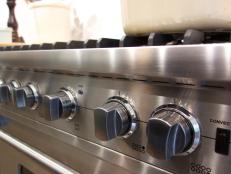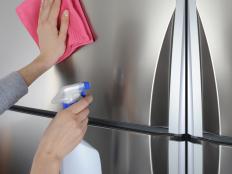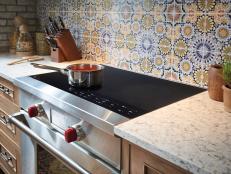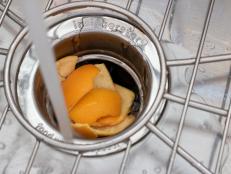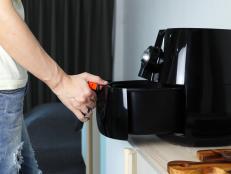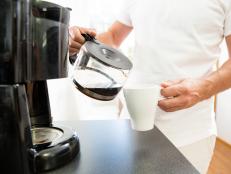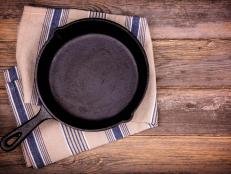How to Clean an Electric Coil Stovetop
Prolong the life of your electric coil stove with these simple cleaning and maintenance tips. Whether you have burnt-on food or a pool of grease beneath the drip pan, learn how to make your cooktop sparkle.

Cleaning an electric coil stove involves removing burnt food and residue from the exposed coil burners as well as cleaning the underlying drip pan and stovetop lid. The process for cleaning electric coils is a little more complex than cleaning a glass-top cooktop or induction range, but similar in scope to the chore of cleaning a gas cooktop.

Michael Hall
Regular cleaning can keep your electric coil cooktop in great shape.
Tips for Maintaining Your Electric Coil Cooktop
As with any appliance, it’s important that homeowners stay a step ahead. A well-maintained cooktop will last for many years if you regularly perform these maintenance tasks.
- Wipe down the cooktop every day to reduce the frequency of deep cleaning.
- Extend the life of your burners by rotating them on the stovetop.
- Line the drip pans with aluminum foil. This extra layer of protection may not evoke the aesthetic of a chef’s kitchen, but it’s undeniably helpful when you’re cooking a meal that’s prone to making a mess.
Here are the best practices to help you maintain and clean your electric coil stove.
Materials You'll Need
- dish soap
- clean cloths
- water
- toothbrush
- white vinegar
- spray bottle
- baking soda
1. Remove the Stove Burners
It’s important to remove the electric coils from the stovetop before cleaning in order to get the most thorough clean without affecting the electronics with moisture. The electric coils must be completely cool (at room temperature) before you handle them.
Refer to the manufacturer’s instructions if you’re unsure how to remove the electric coils. In most models, the entire coil easily unplugs, just like pulling an electrical cord from the wall; however, some stovetops require the user to squeeze the prongs or gently disconnect the coils.

Emily Fazio
Unplug the electric coils before cleaning the cooktop.
2. Clean Residue on the Burners
Routine cleaning of a burner may only require you to wash and dry the electric coil by hand. Never submerge or soak the electric components. If your burners are in fair shape, a light cleaning will do.
- Apply dish soap to a damp cloth and agitate the soap so it’s bubbly.
- Hold the burner in one hand and apply the soap to the coil. You can wipe over the electric components but avoid soaking them with soap and water.
- Use an old toothbrush to get in between the coils, if necessary.
- Rinse the soapy cloth until it runs clean and ring it out.
- Wipe down the coils with that damp cloth to clean away the soap.
- Allow the burner to air dry.
To tackle tough build-up, take cleaning efforts up a notch. If you have baked-on food residue or your coil smokes when it heats up, a deep cleaning is the best solution.
- Use a plastic razor blade or the edge of a credit card to loosen any burnt food.
- Create a baking soda paste by mixing 1/4 cup of baking soda and 3 tablespoons of water.
- Massage the paste into the electric coil, again using the toothbrush if it helps you get better coverage between the coils.
- Let the electric coil sit flat on your work surface and cover the electrical components with a dry cloth to keep them safe.
- Fill a spray bottle with white vinegar and mist the baking soda-covered areas. The interaction with the vinegar and the baking soda paste will help penetrate the build-up and loosen it.
- Let the coil sit for 5 minutes.
- Wipe the solution clean with a damp cloth.
- Allow the burner to air dry.

Emily Fazio
Clean the electric coils from your cooktop on a flat, clean surface. Do not submerge them in water.
3. Clean the Drip Pans
While the burners are drying, turn your attention to the drip pans. Assuming you haven’t lined the pans with easy-to-remove foil, there are surely bits of food and splashes of oil that have settled in the space beneath the burner.
These drip pans are often removable, making it easy to wash them right in the sink with soapy water. If you have the time, chrome and porcelain pans can also go into the dishwasher. Some stovetops mold the drip pan into the cooking surface, requiring the user to wipe the stovetop with soap and water. You can also use white vinegar, but dilute it 1:1 with water to weaken the concentration.
4. Clean Beneath the Burners
Lift up the stovetop. If your drip pans have collected oils and moisture, it’s likely that some of that made its way underneath the burners. Use a damp cloth with dish soap to loosen any buildup and clean the surface. Use a dry cloth to wipe the area clean before closing the stovetop lid.
5. Reassemble the Stove Burners
With the stovetop closed and the drip pans back in place, you can insert the electric coils back into their designated spots. Be careful not to twist or bend the connections when reconnecting the cooktop components.
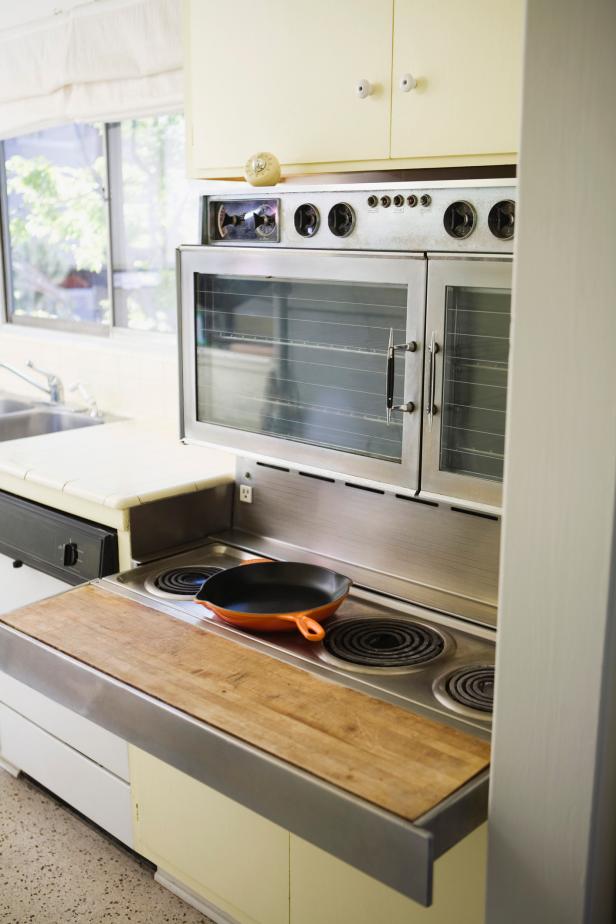
Brantlea Newbery
Proper maintenance can help you extend the life of your cooktop.
How to Clean a Gas Stovetop
If your marathon cooking sessions have your gas range looking worse for wear, it’s time to hit pause and give it a good scrub down.







